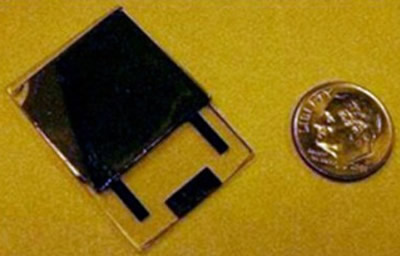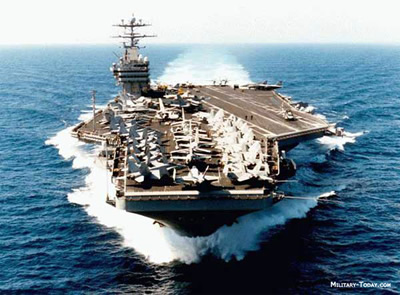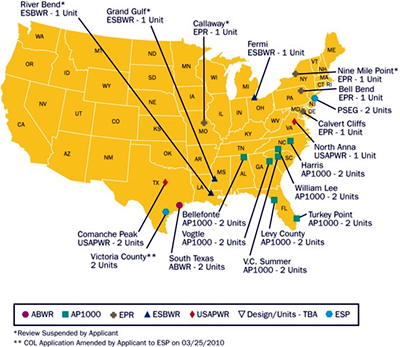- The Vitruvian Plant: Powering the Future #10-2284
-
Background
History of Nuclear Energy Nuclear Agencies and Regulations Nuclear Power in the Public Eye Economics of Nuclear Energy Radioactivity Basics Nuclear Reactor Basics Current Reactor Designs Processing Radioactive Materials Remote Handling Uses of Radiation Archimedes Filter Technology New Generation Reactors
- Components
- Project
Component One
Prepare a 200- to 300-word history about the National Critical Technology (NCT) technical application your team has selected to solve a local or national problem.
Since 1934, when Enrico Fermi initiated the world’s first nuclear fission,
engineers and scientists alike have been working towards developing a nuclear power
reactor that would be able to satisfy energy consumers, please environmentalists,
and keep your wallet relatively full.
In the 1940’s scientists worked towards developing weapons for the military, including the famed atomic bombs, which were used to end WWII. During this time, experiments uncovered knowledge that enriched our understanding of nuclear science and gave us insight in to potential technological opportunities. By the early 1950’s we had technologies like Hyman Rickover’s US Navy aircraft carrier USS Nautilus, submarine vessel USS Triton, and the JBORAX-III, a nuclear power plant used to power the entire town of Arco, Idaho.
While the nuclear science aspect saw success, the political component fell fast. In the 1970s nuclear proliferation became a topic of great concern as the Cold War intensified between the USA and the USSR; during this time leaders saw fear in their citizens’ eyes over the possibility of global nuclear hostilities. In the next decade, the world was forced to witness the horrible catastrophes at Three Mile Island and Chernobyl which gave rise to precautions towards safely using nuclear energy.
Not all things nuclear were detrimental; our research produced many benefits, including a clean economical energy solution. Significant economical impacts have been realized in the 1990s and 2000s, which have led us to consider nuclear power as our single "green fuel source;" global leaders are making the switch to nuclear reactors as substitutes for rapidly depleting fossil fuels.
Although nuclear technology has yet to rid itself of all of its negative connotations, in recent years much of its strong opposition has been quelled, allowing it to make astonishing advancements.
In the 1940’s scientists worked towards developing weapons for the military, including the famed atomic bombs, which were used to end WWII. During this time, experiments uncovered knowledge that enriched our understanding of nuclear science and gave us insight in to potential technological opportunities. By the early 1950’s we had technologies like Hyman Rickover’s US Navy aircraft carrier USS Nautilus, submarine vessel USS Triton, and the JBORAX-III, a nuclear power plant used to power the entire town of Arco, Idaho.
While the nuclear science aspect saw success, the political component fell fast. In the 1970s nuclear proliferation became a topic of great concern as the Cold War intensified between the USA and the USSR; during this time leaders saw fear in their citizens’ eyes over the possibility of global nuclear hostilities. In the next decade, the world was forced to witness the horrible catastrophes at Three Mile Island and Chernobyl which gave rise to precautions towards safely using nuclear energy.
Not all things nuclear were detrimental; our research produced many benefits, including a clean economical energy solution. Significant economical impacts have been realized in the 1990s and 2000s, which have led us to consider nuclear power as our single "green fuel source;" global leaders are making the switch to nuclear reactors as substitutes for rapidly depleting fossil fuels.
Although nuclear technology has yet to rid itself of all of its negative connotations, in recent years much of its strong opposition has been quelled, allowing it to make astonishing advancements.
Cite three detailed examples of research done in the past 3 to 5 years which focused
on the NCT technical application your team selected. Include:
 the funding agency,
the funding agency,
 the principal investigator's name, and
the principal investigator's name, and
 the institution where the research is or was being conducted.
the institution where the research is or was being conducted.
In his 2011
State of the Union speech on Jan 27th, President Barack Obama stated
that his Administration has set aside
$67 Million in the 2012 budget to go towards research in modular nuclear
reactors.
Grant 1: In July of 2010 the
Virginia Tobacco Indemnification and Community Revitalization Commission
awarded a total of
$2.4 million grant to the Babcock & Wilcox Company to create the B&W mPower Integrated System
at a site in
Bedford County, Virginia. The President of B&W Nuclear Energy, Inc., Chris
Mowry, believes that this relocation will play an important role in moving forward
with the testing and licensing of
mPower reactors. The Integrated System Test (IST) will be built at the Center
for Advanced Engineering and Research (CAER) and is expected to be
operational in 2011.
Grant 2: In 2007 the US Department of Energy awarded $750,000 to FAR-TECH, Inc as part of the Small Business Innovation Research Program. FAR-TECH is using the funds to research and develop an Archimedes Plasma Mass Filter to use in the separation process for nuclear waste. Reports of the findings from their demonstration prototype were reported by Richard Freeman et al. at the AIP conference on December 15, 2003. Their US Patent #6,096,220 - Plasma Mass Filter was awarded on August 1, 2000.
Grant 3: In October of 2010, Oxford Technologies, Ltd, and Consorzio RFX donated a combined £1M grant to the Culham Centre for Fusion Energy (CCFE) to design ITER’s NeutralBeam Cell through methods of a remote handling system. This apparatus contains a heavy-duty monorail crane system and six systems of dexterous manipulators and booms. This remote handling system project, led by Nick Sykes, will safely maneuver desired objects in a radioactive environment without the need of human manipulation, thus protecting against any possible radioactive emissions.
As part of our research, we would like to cite several patents that deal with reactors
and the use of radioactive materials.
Grant 2: In 2007 the US Department of Energy awarded $750,000 to FAR-TECH, Inc as part of the Small Business Innovation Research Program. FAR-TECH is using the funds to research and develop an Archimedes Plasma Mass Filter to use in the separation process for nuclear waste. Reports of the findings from their demonstration prototype were reported by Richard Freeman et al. at the AIP conference on December 15, 2003. Their US Patent #6,096,220 - Plasma Mass Filter was awarded on August 1, 2000.
Grant 3: In October of 2010, Oxford Technologies, Ltd, and Consorzio RFX donated a combined £1M grant to the Culham Centre for Fusion Energy (CCFE) to design ITER’s NeutralBeam Cell through methods of a remote handling system. This apparatus contains a heavy-duty monorail crane system and six systems of dexterous manipulators and booms. This remote handling system project, led by Nick Sykes, will safely maneuver desired objects in a radioactive environment without the need of human manipulation, thus protecting against any possible radioactive emissions.
US Patent #6797176: The Archimedes Technology Group, Inc. is based in San Diego, California. They received a patent on September 28, 2004 for a plasma mass filter with inductive rotational drive, which is a device that can separate particles with relatively different mass/charge ratios.
US Patent Application #20090252273 by John Rogers Gilleland, of TerraPower provides an outline of an automated fast-neutron fission reactor, the traveling wave reactor. TerraPower received $35 million from a group of investors that included: Charles River Ventures, Khosla Ventures, and many wealthy individuals such as Nathan Myhrvold, Vinod Khosla, and Bill Gates. TerraPower has conceptualized a design that will burn through spent uranium in a “cigarette- like fashion” to produce a billion watts of electricity constantly for 50 to 100 years without replacing any fuel. Nuclear proliferation is not an issue with the TWR as it uses undesirable material that lacks enriched uranium and large amounts of potentially dangerous plutonium waste. The dependability associated with a longer reaction cycle lowers the amount of maintenance necessary while still providing a safer, more efficient reactor.
US Patent #4,835,433: Apparatus for Direct Conversion of Radioactive Decay Energy to Electrical Energy This patent was granted to Paul M. Brown in May 1989. Mr. Brown's objective was to create a "small, compact, reliable, and self-contained" battery that would be capable of providing large amounts of power for long periods of time with little or no maintenance. He would achieve this through the use of three radioactive nucleonides that decayed by alpha emissions.
Based on the research your team has done, explain how the NCT application chosen has advanced scientific knowledge.
The energy that society fosters plays an integral role in forming their standard
of living. The need for energy is ingrained in the very fiber of human survival,
thus explaining the prevalence of energy-related fields and professions in thriving
societies. One of the main components to an advancing civilization is the cultivation
of the energy resources into applications for human use, or technology.
Key to the use of nuclear energy is the ability to harness the power given off by radioactive isotopes. Atomic batteries, also known as nuclear batteries, allow for energy to flow for 10-20 years from one small battery source the size of a top of a thumb tack. The atomic battery has been used in such venues as NASA space missions and various military missions. The most common type of atomic battery is betavoltaics which uses a semiconductor to absorb beta decay to collect a current. Although less prevalent, the Direct Energy Conversion Cell (DEC) runs on electrons generated by the decay of the radioactive isotope tritium. The 12.3 year half-life of tritium allows for the DEC Cell to provide approximately ten years worth of nuclear power. These batteries would have lucrative economic implications for medical and oil conglomerates. Nuclear batteries have been responsible for powering common devices like human pace makers, underwater apparatus, and satellites for many years. Nuclear powered batteries have proven to be more energy efficient than chemical batteries.
For many years the military has used nuclear technology on submarines and aircraft carriers. Nuclear energy is used on vessels that need to be at sea for long periods of time and have even allowed nuclear submarines to stay underwater for weeks. With the current focus on greenhouse gasses and pollution, interest in nuclear propulsion systems for naval vessels is expected to be renewed.
NASA has benefited from nuclear technology as well. For more than a decade, the space probe Cassini has been flying through space. This was made possible by a Radioisotope Thermoelectric Generator (RTGs) which is a type of atomic battery. These generators run off of the decay cycle of a plutonium isotope and are responsible for the success of many space missions and satellites. Due to the large amount of money invested into these missions, radioisotope thermoelectric generators have become extremely safe and effective for use in space exploration.
Nuclear technology has made huge contributions to medical science. Radiotherapy is currently known as one of the most effective forms of cancer treatment. Nuclear-based medicine is very cost-effective and is constantly being improved. Many hospitals have recently upgraded to include nuclear tools.
The United States Nuclear Regulatory Commission has projected many new reactor sites for the near future.
Key to the use of nuclear energy is the ability to harness the power given off by radioactive isotopes. Atomic batteries, also known as nuclear batteries, allow for energy to flow for 10-20 years from one small battery source the size of a top of a thumb tack. The atomic battery has been used in such venues as NASA space missions and various military missions. The most common type of atomic battery is betavoltaics which uses a semiconductor to absorb beta decay to collect a current. Although less prevalent, the Direct Energy Conversion Cell (DEC) runs on electrons generated by the decay of the radioactive isotope tritium. The 12.3 year half-life of tritium allows for the DEC Cell to provide approximately ten years worth of nuclear power. These batteries would have lucrative economic implications for medical and oil conglomerates. Nuclear batteries have been responsible for powering common devices like human pace makers, underwater apparatus, and satellites for many years. Nuclear powered batteries have proven to be more energy efficient than chemical batteries.
For many years the military has used nuclear technology on submarines and aircraft carriers. Nuclear energy is used on vessels that need to be at sea for long periods of time and have even allowed nuclear submarines to stay underwater for weeks. With the current focus on greenhouse gasses and pollution, interest in nuclear propulsion systems for naval vessels is expected to be renewed.
NASA has benefited from nuclear technology as well. For more than a decade, the space probe Cassini has been flying through space. This was made possible by a Radioisotope Thermoelectric Generator (RTGs) which is a type of atomic battery. These generators run off of the decay cycle of a plutonium isotope and are responsible for the success of many space missions and satellites. Due to the large amount of money invested into these missions, radioisotope thermoelectric generators have become extremely safe and effective for use in space exploration.
Nuclear technology has made huge contributions to medical science. Radiotherapy is currently known as one of the most effective forms of cancer treatment. Nuclear-based medicine is very cost-effective and is constantly being improved. Many hospitals have recently upgraded to include nuclear tools.
The United States Nuclear Regulatory Commission has projected many new reactor sites for the near future.
A Reactor That Burns Depleted Fuel Emerges as a Potential 'Game Changer'
http://www.nytimes.com/cwire/2010/02/23/23climatewire-a-reactor-that-burns-depleted-fuel-emerges-a-72189.html
A nuclear battery the size and thickness of a penny
http://www.gizmag.com/smaller-nuclear-battery/13076/
About CCFE: Culham Centre for Fusion Energy
http://www.fusion.org.uk/CCFE.aspx
About FAR-TECH, Inc.
http://www.far-tech.com/about.html
Archimedes Plasma Mass Filter
http://epsppd.epfl.ch/StPetersburg/PDF/O1_006A.PDF
Archimedes Plasma Mass Filter Conference Proceedings
http://scitation.aip.org/getabs/servlet/GetabsServlet?prog=normal&id=APCPCS000694000001000403000001&idtype=cvips&gifs=yes&ref=no
Argonne Research History
http://www.anl.gov/Science_and_Technology/History/Anniversary_Frontiers/16borax3.html
Atomic battery
http://www.worldlingo.com/ma/enwiki/en/Atomic_battery
B&W To Open mPower Testing Facility In Bedford County, Virginia
http://nuclear.energy-business-review.com/news/bw_to_open_mpower_testing_facility_in_bedford_county_virginia_100727
B&W to Locate State-of-the-Art Testing Facility in Bedford County, Va.
http://www.babcock.com/news_and_events/2010/20100727a.html
B&W to build mPower test facility
http://www.world-nuclear-news.org/NN-BandW_to_build_mPower_test_facility-2807104.html
Backgrounder on the Three Mile Island Accident
http://www.nrc.gov/reading-rm/doc-collections/fact-sheets/3mile-isle.html
Biography of Enrico Fermi
http://nobelprize.org/nobel_prizes/physics/laureates/1938/fermi-bio.html
Chernobyl Nuclear Accident
http://history1900s.about.com/od/horribledisasters/p/Chernobyl.htm
Cold War
http://www.nps.gov/archive/elro/glossary/cold-war.htm
Department of Energy: Grant Applications Selected For FY 2007 Awards
http://www.science.doe.gov/sbir/newweb/FY07awards.htm
FY11 Research and Development Awards
http://www.tic.virginia.gov/pdfs/grantfunding/R&D/FY11/FY11%20Research%20&%20Development%20Awards%207-29-10.pdf
Fossil Fuels
http://www.umich.edu/~gs265/society/fossilfuels.htm
History of USS NAUTILUS
http://www.ussnautilus.org/nautilus/index.shtml
IEEE Spectrum: Nuclear Reactor Renaissance
http://spectrum.ieee.org/energy/nuclear/nuclear-reactor-renaissance/3
ITER systems remote handling design project well underway
http://www.ccfe.ac.uk/news_detail.aspx?id=89
Improving Human Health
http://www.euronuclear.org/info/human-health.htm
Location of Projected New Nuclear Power Reactors
http://www.nrc.gov/reactors/new-reactors/col/new-reactor-map.html
New funding fuels TerraPower
http://sustainableindustries.com/articles/2010/06/new-funding-fuels-terrapower
Nimitz class Nuclear-powered aircraft carrier
http://www.military-today.com/navy/nimitz_class.htm
Nuclear power: Energy from splitting Uranium atoms
http://www.darvill.clara.net/altenerg/nuclear.htm
Nuclear-Powered Ships
http://www.world-nuclear.org/info/inf34.html
Plasma Mass Filter Patent
http://ip.com/patent/US6096220
Remote Handling Patent
http://appft1.uspto.gov/netacgi/nph-Parser?Sect1=PTO1&Sect2=HITOFF&d=PG01&p=1&u=/netahtml/PTO/srchnum.html&r=1&f=G&l=50&s1=%2220090252273%22.PGNR.&OS=DN/20090252273&RS=DN/20090252273
Remote Handling Systems
http://www.efda.org/usercases/downloads/industry/AWE_Palmer.pdf
Resonant Nuclear Battery
http://www.rexresearch.com/nucell/nucell.htm
Shrinking Reactors
http://www.robertbryce.com/node/300
Siemens Brings Together Magnetic Resonance and Positron Emission Tomography Into One Machine
http://medgadget.com/archives/nuclear_medicine/
Space Pictures - Space Probes/Cassini Spaceprobe Construction
http://www.spacepictures.org/displayimage-280.html
Spacecraft Power for Cassini
http://saturn.jpl.nasa.gov/multimedia/products/pdfs/power.pdf
Spent Nuclear Fuel Separation with the Archimedes Plasma Mass Filter
http://www.sc.doe.gov/sbir/awards_abstracts/sbirsttr/cycle25/phase2/072.htm
State of the Union 2011
http://www.whitehouse.gov/state-of-the-union-2011
TerraPower Home
http://www.terrapower.com
TerraPower Leadership
http://www.terrapower.com/whoweare/Leadership.aspx
TerraPower: How The Traveling Wave Nuclear Reactor Works
http://gigaom.com/cleantech/terrapower-how-the-travelling-wave-nuclear-reactor-works/
The Atomic Battery
http://technologyreview.com/computing/14548/page2/?a=f
The Atomic Bomb and the End of World War II
http://www.gwu.edu/~nsarchiv/NSAEBB/NSAEBB162/index.htm
The Babcock & Wilcox Company plans to deploy the B&W mPower™ reactor
http://www.babcock.com/products/modular_nuclear/
USS Triton
http://www.navysite.de/ssn/ssn586.htm




